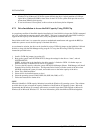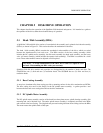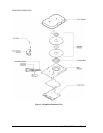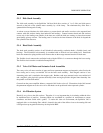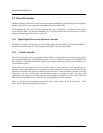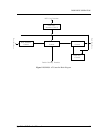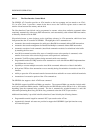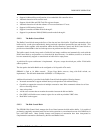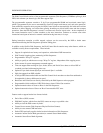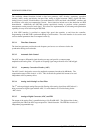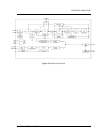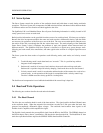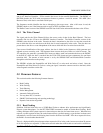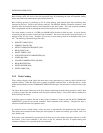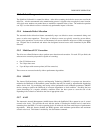
DISK DRIVE OPERATION
SpinPoint V40
Product Manual
30
The Disk Control block consists of the programmable sequencer (Disk Sequencer), CDR/data split logic, disk
FIFO, fault tolerant sync detect logic, and other support logic.
The programmable sequencer contains a 31-by-2 byte programmable SRAM and associated control logic,
which is programmed by the user to automatically control all single track format, read, and write operations.
From within the sequencer micro program, the Disk Control block can automatically deal with such real time
functions as defect skipping, servo burst data splitting, branching on critical buffer status and data compare
operations. Once the Disk Sequencer is started, it executes each word in logical order. At the completion of
the current instruction word, it either continues to the next instruction, continues to execute some other
instruction based upon an internal or external condition having been met, or it stops.
During instruction execution or while stopped, registers can be accessed by the DSP to obtain status
information reflecting the Disk Sequencer operations taking place.
In addition to the flexible Disk Sequencer, the Disk Control block contains many other features, which are
available to satisfy diverse requirements. These include:
• Support for optimized zero latency read operations, with minimal DSP intervention.
• Disk Transfer Length registers monitoring in Disk Sequencer.
• Programmable “Wrap To” registers.
• Ability to specify at which sector to wrap “Wrap To” register, independent of the stopping sector.
• Index counter for power management command support.
• Time-out support when waiting for Sync, Index, Sector, and End of Servo burst to relieve DSP of
overhead associated with managing time outs.
• Optional 2-byte fault tolerant byte Sync and external Sync is available.
• Split data support from DSP or buffer.
• A 96-byte FIFO between the buffer and the Disk Control block smoothes out data flow attributed to
discontinuities in data or differences in speed.
• Read Gate and Write Gate are directly controlled by the Disk Sequencer micro program.
• Programmable initial condition of NRZ Write data at time of Write Gate assertion.
• Optional manual release of Sector to Host via the Disk Sequencer.
• Optional automatic release of Sector to Host if uncorrectable ECC error.
Features used to support header-less formats include:
• End of Servo (EOS) counter.
• EOS MAX register, which allows the EOS, counter to wrap at a specified value.
• Ability to clear the EOS counter by Index.
• Current Sector counter (Disk Sequencer Physical Position Counter).
• Ability to reset current CDR instruction.
• Defect FIFO optionally supplies defect location information to Disk Sequencer.
• Automatic internal Sector Mark generation (no external Sector Mark needed).
• Automatic Sector/Servo Mark alignment.



